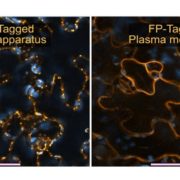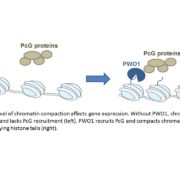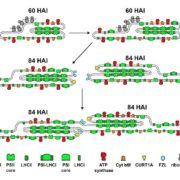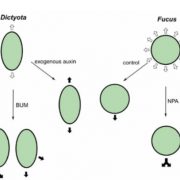Focus Issue: Biomolecular Condensates
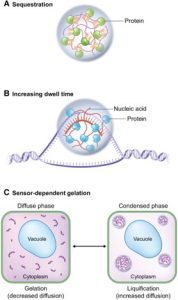 Although The Plant Cell Focus Issue on Biomolecular Condensates officially comes out in September, due to the idiosyncrasies of publishing many of the articles are already available online, and I’m highlighting them now because this topic is also the focus of a plenary session at the Plant Biology meeting in August (https://plantbiology.aspb.org/plenaries/). Although the term “biomolecular condensates” is relatively new, it actually reflects a convergence and synthesis of several distinct threads of research. Biomolecular condensates span from “classic” membraneless organelles (e.g., nucleolus, pyrenoid) to small, transient functional condensates, some of which are only recently recognized. I particularly enjoyed reading about how membranes can be involved in the formation of some of these condensates, revealing yet again that cells are stunningly sophisticated systems. A lot of the advancements in our understanding come from new tools and imaging techniques that reveal condensate structures and functions, many of which are reviewed here. The collection provides a great overview of this coalescing discipline, and it’s one not to miss. Start with the editorial overview by Gutierrez-Beltran et al. (Summary by Mary Williams @PlantTeaching) Plant Cell 10.1093/plcell/koad182
Although The Plant Cell Focus Issue on Biomolecular Condensates officially comes out in September, due to the idiosyncrasies of publishing many of the articles are already available online, and I’m highlighting them now because this topic is also the focus of a plenary session at the Plant Biology meeting in August (https://plantbiology.aspb.org/plenaries/). Although the term “biomolecular condensates” is relatively new, it actually reflects a convergence and synthesis of several distinct threads of research. Biomolecular condensates span from “classic” membraneless organelles (e.g., nucleolus, pyrenoid) to small, transient functional condensates, some of which are only recently recognized. I particularly enjoyed reading about how membranes can be involved in the formation of some of these condensates, revealing yet again that cells are stunningly sophisticated systems. A lot of the advancements in our understanding come from new tools and imaging techniques that reveal condensate structures and functions, many of which are reviewed here. The collection provides a great overview of this coalescing discipline, and it’s one not to miss. Start with the editorial overview by Gutierrez-Beltran et al. (Summary by Mary Williams @PlantTeaching) Plant Cell 10.1093/plcell/koad182




